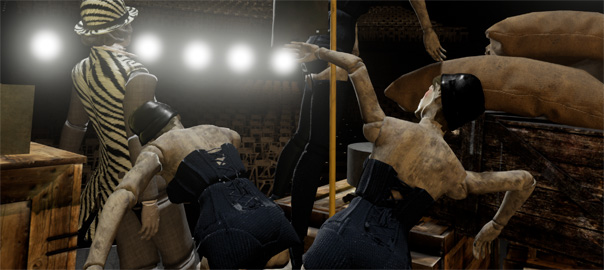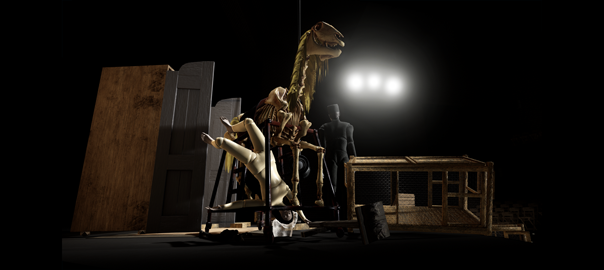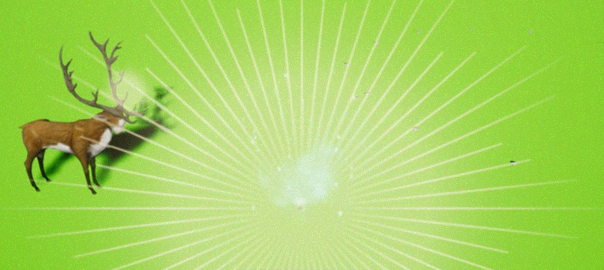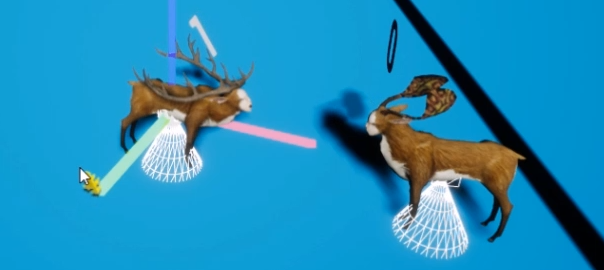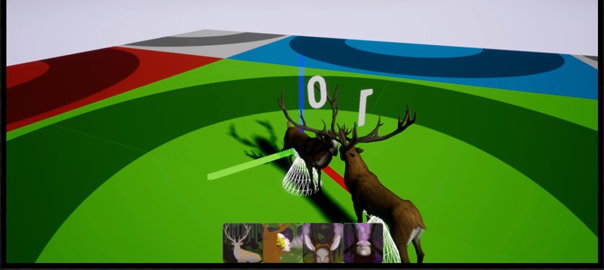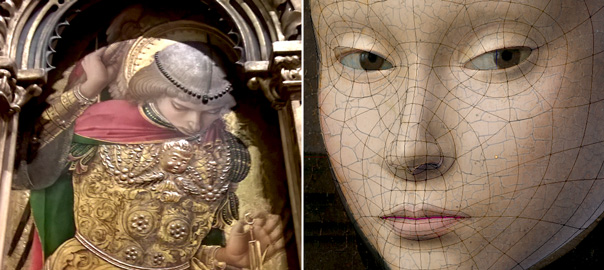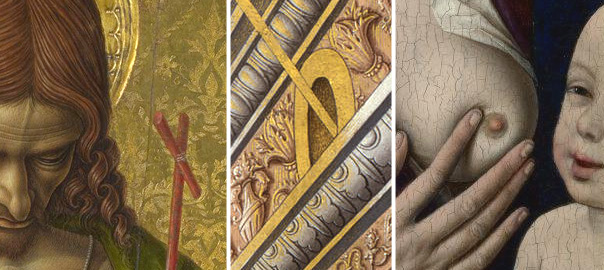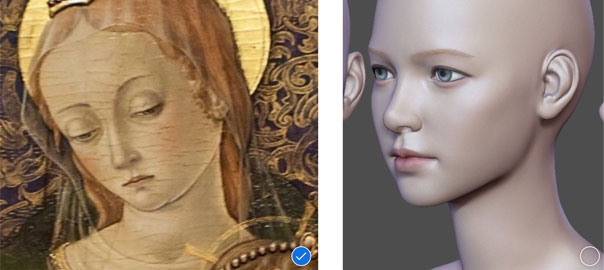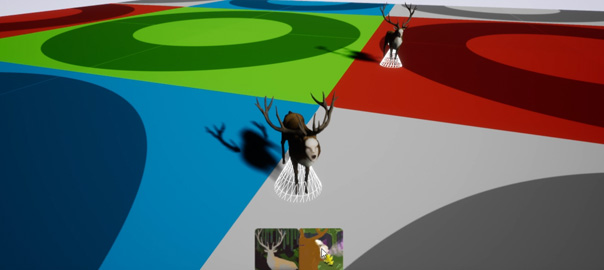On the eve of the premiere of Cricoterie in Warsaw.
Computers have a reputation of being sterile machines that only do what you tell them to do. But anyone who has attempted to program knows that in fact they are wild animals that stubbornly resist taming. Software runs on a computer processor in real time. It does things on its own, such as responding to a user’s input. There is a tendency in computer programming to limit the inherent potential for autonomous behavior of software in favor of streamlining the experiences that its human users have with it. But computers are wild beasts and more often than not computer programs will produce errors or bugs. It is when such errors happen that we feel some of the energy that resembles life in our machines.
Inspired by Tadeusz Kantor’s leveling of the distinctions between props and actors on the theater stage, Auriea and I created a program that attempts to demonstrate this strange form of life that takes place on the computer’s processor. After all, every object in realtime 3D is made from the same material: vertices, edges, faces and textures can take the form of a table, a chair, a machine or a person. And yet I do not think of those objects as representations of objects in the real world. Instead I consider them to be objects in the real world themselves. What happens in the computer is part of the real world that we happen in.
Virtual Reality is a technology that allows us to physically enter the realm of software. As opposed to flat screens, VR does not require any imagination. It puts you right in the middle of the virtual world. You don’t need to imagine how big something is or how far away it is. You can simply see it with your own body as reference and walk towards it.
Cricoterie confronts you with objects derived from Kantor’s theater. The behavior of these objects is subjected to the laws of physics. Or at least to a mathematical simulation of these laws, in and of itself a computer program. As a computer program, this simulation is imperfect. It is similar enough to feel familiar to a human user. But things always go wrong. Objects do not fall correctly, they seem too light or too heavy, they intersect with other objects or start shaking violently. I did not program this to happen. But I embrace these errors precisely because they make the objects seem more alive, even if it is a sort of life that may seem alien to us.
I am very proud of Cricoterie. In the way that I might be proud of a pet or a child or a friend. As a creation it approaches more than anything I have made before my feelings about art that uses the computer as its medium. Not for the display of images or the reproduction of sound, or the entertainment of users. But as the creation of a form of life. Or, perhaps, the making visible to humans of the life that exists in cyberspace (akin, perhaps, to how Michelangelo may have felt about a sculpture being contained in a raw block of marble).
All of the environments and characters that Auriea and I have created in our videogames are dear to me. I do not think of them as pictures or symbols that serve the presentation of some concept or story. They are living beings that I am eager to observe and get to know. I delight in the errors that they make, the things they decide to do in spite of my sincere programming attempts to prevent them. To see someone play with Cricoterie is always an adventure. I do not now what is going to happen. And I am immensely curious as to how my creatures will treat the user this time.
This is not to say that there is no vital role to play for the human user. Cricoterie presents objects to you, objects often filled with cultural and social meaning, and lets you manipulate them however you see fit. It is in the confrontation with these objects and specifically in observing your own response to them that the art happens.
While I was creating Cricoterie, I was introduced to Object-Oriented Ontology. OOO is a philosophical school of thought that calls itself realist. By this is meant that, as strangely opposed to a lot of philosophy, it holds that objects exist even when humans are not interacting with them. And everything is an object. Thoughts are objects as much as cans of beer and rocks are. Even feelings, relationships and events are objects. Crucial to OOO is the rejection of the possibility to actually know all there is to know about these objects. Since that would reduce them to an existence that depends on human consideration. This stubborn existence of objects beyond our control demands respect.
Encountering these ideas explained a lot to me about how I feel about the software I create and the virtual objects in it. And also about why I consider this attitude a worthy aspect of art making. Apparently my ideas about software can be expanded to include the world outside of the computer as well. I have always considered the virtual and the real to exist in the same universe. But OOO helped my realize that this is not because the virtual resembles the real but in fact because, on closer inspection, the real resembles the virtual. To understand that this is not a degradation (from life to computer simulation) but rather an opening up to a much broader field of experience (somewhat reminding me of my brief encounter with Buddhism earlier this year) has been eye-opening.
The philosophers in the OOO school will probably scoff at this, but I very much enjoy the mystical qualities that even banal objects acquire in my eyes by existing beyond the grasp of humans. There’s a certain spirituality in this stubborn objecthood of things, a certain peace. If only because it allows God himself to return to our existence in the form of an object, next to all the other objects. Hello, God, how have you been?
―Michaël Samyn.
